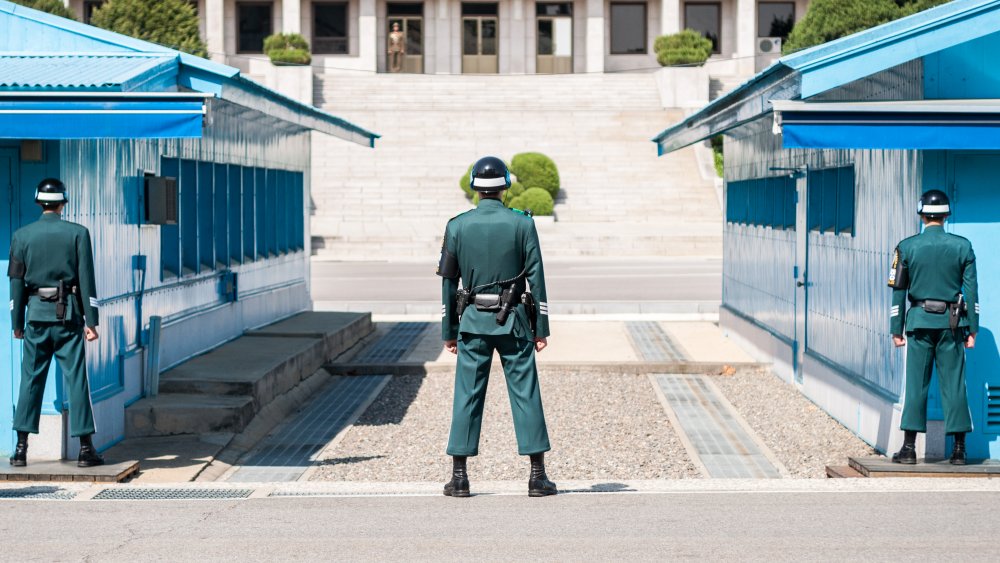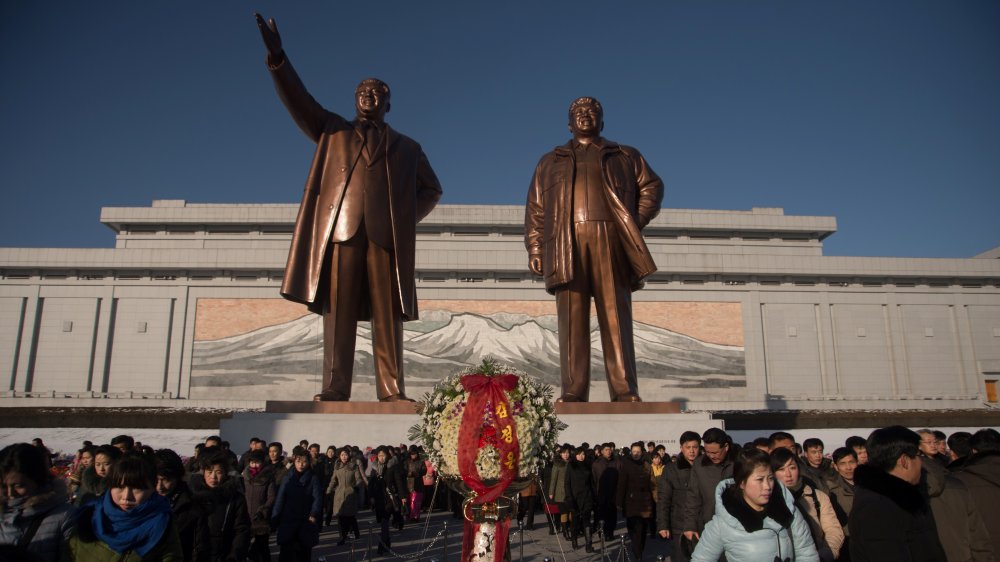The Real Reason North And South Korea Split
The first dictator of North Korea was born on April 15, 1912, the same day that the Titanic sank. This was no accident, according to North Korea's United Front Department (UFD). As described in Change and Continuity in North Korean Politics, what others might see as a grim coincidence signaled the simultaneous collapse of capitalism and ascension of communism within the borders of the Hermit Kingdom. The UFD proclaimed, "As the Sun set in the West, it rose in the East." North Korean defector Jang Jin-sung wrote in Dear Leader: My Escape from North Korea that this was touted not only as an omen, but "historical proof," that Kim Il-sung was "the Sun of the World."
Kim's entire life story would become a master class in propaganda of the most Orwellian Order. As the BBC describes, the state-approved narrative claims that he laid the groundwork for the country's Communist Party at fourteen years old, establishing the "Down-with-Imperialism Union" on October 17, 1926. That date would be commemorated by Kim's successors. However, the true dawn of Kim's dominance didn't come until much later, when a tug of war between communism and capitalism split the Korean peninsula in two.
The Land of the Rising Sung
Via the Encyclopedia Britannica, Korea had been existed as a single kingdom under Chosŏn dynasty rule since the late 14th century. The nation's language has foundations that date back to the Stone Age. But that continuity would come under attack in 1910, when Japan colonized the peninsula and waged what History calls an "all-out war on Korean culture." Families were displaced, hundreds of thousands of historical documents were set ablaze, and many Koreans were subjected to sexual slavery and forced labor. Schools and universities banned speaking in Korean.
The end of WWII put an stop to Japanese rule, and its systematic erasure of Korean culture. From there, though, the Soviet Union swooped in to assert influence on the northern portion of the country while the U.S. established itself in the south. Korea essentially had no say in the matter, according to Michael Robinson, professor emeritus of East Asian Studies and History at Indiana University. The U.S. and U.S.S.R. divided the Koreas along the 38th parallel, which also marked the border between political allegiances among the Korean people.
In 1948, the U.S. pushed for a U.N. backed vote of self-determination by the Korean people. The North balked, prompting the South to install a U.S. backed strongman as its leader. This opened the door for the ascendant Kim Il-sung to become the leader of North Korea, ultimately plunging the fractured peninsula into the Korean War.

